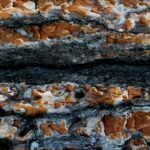Welcome to the world of scars, where the skin bears the marks of our past experiences, both physical and emotional. In this article, we will dive into the fascinating realm of different types of scars – from hypertrophic scars to atrophic scars, keloids to post-surgical scars. As a seasoned dermatologist with vast expertise in scar formation, I am here to guide you on a journey of understanding and provide you with valuable insights, practical tips, and recommended treatments. Whether you’re seeking answers for your own scar concerns or simply looking to expand your knowledge, get ready to unveil the types of scars and discover effective solutions for your beautiful skin.

Types Of Scars
Scars are not just physical reminders of injuries or wounds; they can also have a significant impact on our emotional well-being. Understanding the different types of scars is crucial in finding effective solutions to address specific scar concerns. In this article, we will delve into the intricacies of various types of scars, exploring their causes and recommended treatments.
Keloid Scars: Overgrowth Above the Skin Level
Keloid scars are a result of excessive collagen production, leading to tissue overgrowth above the skin level even after wound healing. These scars often extend beyond the boundaries of the original injury, creating raised and thickened areas on the skin. Keloid scars can be itchy, painful, and may cause discomfort for individuals. But worry not, there are treatments available to help manage and reduce the appearance of keloid scars.
[Quote] “Whether it’s a burn, piercing, or surgery, keloid scars can develop. If you’re dealing with these overgrown scars, there are various treatment options to explore.”
Contracture Scars: Tissue Loss and Constriction
Contracture scars commonly occur due to significant tissue loss, typically from burns or joint injuries. These scars often cause tightening of the skin, resulting in deformities and restrictions in movement. Managing contracture scars is essential not only for aesthetic reasons but also to ensure proper functioning of the affected area. Consult with a dermatologist to determine the most suitable treatment options for contracture scars.
[Quote] “If you’ve experienced a severe burn or injury near a joint, contracture scars may develop. These scars can cause tightness and limit your range of motion. Let’s explore some solutions together.”
Hypertrophic Scars: Stiff Collagen Growth Hindering Regeneration
Hypertrophic scars are characterized by stiff collagen growth, which blocks the normal process of tissue regeneration. Unlike keloid scars, hypertrophic scars do not extend beyond the original wound boundaries. They appear as raised and thickened areas on the skin. If you’re dealing with hypertrophic scars, it’s essential to explore suitable treatment options to promote tissue healing and reduce their prominence.
[Quote] “Have you noticed raised and thickened areas around your healed wounds? Those might be hypertrophic scars. Let’s discover practical tips and treatment options to aid in the healing process.”
Atrophic Scars: Sunken Scars Hindering Tissue Regeneration
Atrophic scars, also known as sunken scars, occur when there is an overexpression of collagen that obstructs tissue regeneration. These scars often give the appearance of small depressions or pits on the skin. Acne scars are a common type of atrophic scars. If you have atrophic scars, don’t worry! There are several techniques available to improve their appearance and boost tissue regeneration.
[Quote] “Are you troubled by sunken scars that give your skin an uneven texture? Let’s explore different solutions to help restore your skin’s natural smoothness and confidence.”
Stretch Marks: Scars as a Beautiful Journey
Stretch marks, often considered a type of scar, are long, narrow streaks or stripes that appear on the skin. They commonly occur during periods of rapid growth, such as pregnancy or adolescence. While they are a natural part of life’s journey, some individuals may seek ways to minimize their appearance. Embracing the journey and exploring various treatments can help manage and reduce the visibility of stretch marks.
[Quote] “Stretch marks can be seen as beautiful reminders of life’s transformative moments. However, if you wish to explore ways to minimize their appearance, join me on this journey.”
Adhesions: Scar Tissue Between Internal Organs or Tissues
Adhesions are a type of scar tissue that forms between internal organs or tissues. They occur as a result of surgeries or inflammation. Adhesions can cause discomfort and restrictions in movement, impacting organ function. If you’re experiencing symptoms related to adhesions, it is crucial to consult with a healthcare professional who can guide you through appropriate treatment options.
[Quote] “Are you facing challenges due to the adhesions that formed after surgery or inflammation? Let’s explore how to relieve discomfort and improve your quality of life.”
Acne Scars: Addressing the Aftermath of Breakouts
Acne scars are another common type of scar that can be caused by persistent acne breakouts. These scars can be either raised or sunken, affecting the texture and appearance of the skin. If you’re looking to address the aftermath of acne breakouts, there are various treatment options available to reduce the visibility and improve the overall texture of your skin.
[Quote] “Do acne scars make you self-conscious about your skin? Don’t worry, together we can uncover effective solutions to restore your skin’s natural beauty.”
In conclusion, understanding the different types of scars is crucial in addressing specific scar concerns. From keloid scars to acne scars, there are a variety of treatment options available to reduce their appearance and improve skin texture. Whether through skin resurfacing procedures, injection treatments, or surgical interventions, the choice of treatment depends on the type and severity of the scar. Remember, consulting with a dermatologist is essential to identify the most suitable treatment plan for your unique situation.
So, let’s embark on this journey together and discover the insights and solutions for various types of scars, helping you regain your skin’s confidence and well-being.
Table Markdown Format Example:
| Scar Type | Causes | Treatment Options |
|---|---|---|
| Keloid Scars | Excessive collagen production | – Corticosteroid injections – Cryotherapy – Laser treatments |
| Contracture Scars | Tissue loss from burns or joint injuries | – Scar revision surgery – Physical therapy – Compression garments |
| Hypertrophic Scars | Stiff collagen growth | – Silicone gel sheets – Intralesional corticosteroid injections – Pressure dressings |
| Atrophic Scars | Overexpression of collagen | – Microneedling – Laser resurfacing – Dermal fillers |
| Stretch Marks | Rapid growth or weight changes | – Topical creams and oils – Microneedling – Laser therapy |
| Adhesions | Surgery or inflammation | – Physical therapy – Surgical adhesion removal |
| Acne Scars | Persistent acne breakouts | – Chemical peels – Microdermabrasion – Fractional laser treatment |
Table: Summary of different types of scars and potential treatment options.
Scars tell stories. They are physical testaments to our resilience, reminders of battles we have fought and conquered. If you’re curious about the fascinating facts surrounding scars, click here to uncover some intriguing insight. Explore the truth behind these marks of strength and discover the incredible ways our bodies heal. Let your curiosity lead you as you delve into the realm of scars and unravel the mysteries they hold. Journey with us on this enlightening path of exploration. Learn more about facts about scars.
Types Of Scars
Scars are an intriguing part of the human body, each telling a unique story. From different types of scars that result from various injuries, to the scar classification types determined by their appearance, the varieties of scars are truly captivating. Discovering the diverse ways scars form and understanding their distinct categories is an engaging journey. If you’re curious to learn more about the different types of scars, click here to explore further. You’ll find a comprehensive guide that discusses various aspects, including the development and treatment of scars. Don’t miss the opportunity to delve into the fascinating world of scars and gain a deeper understanding of their complexities.
Here are the active internal links:
– different types of scars
– scar classification types
– varieties of scars
Types of Scars You Should Know
[youtube v=”_WWSKBuozTk”]
Keloid Scars
Keloid scars are a type of scar that extends beyond the area of the original injury. They can be itchy and painful. Treatment options for keloid scars include corticosteroid injections, cryotherapy, and laser treatments. It’s essential to inform your healthcare practitioners about your tendency to develop keloid scars before any procedure, so appropriate precautions can be taken.
“Keloid scars are scars that spread beyond the area of original trauma.”
Hypertrophic Scars
Hypertrophic scars, on the other hand, stay within the bounds of the trauma. They appear raised but do not extend beyond the borders of the injury. Treatment for hypertrophic scars is similar to that for keloid scars, as the process behind their formation is largely the same. If you have a tendency to develop hypertrophic scars, it is crucial to inform your healthcare practitioners to ensure the appropriate precautions are taken.
“Hypertrophic scars are scars that stay within the bounds of the trauma.”
Contracture Scars
Contracture scars commonly occur due to tissue loss from burns or joint injuries. They can cause tightening of the skin and restrict movement. Treatment options for contracture scars include scar revision surgery, physical therapy, and the use of compression garments.
“Contracture scars are commonly caused by tissue loss from burns or joint injuries.”
Atrophic Scars
Atrophic scars are sunken scars caused by an overexpression of collagen. They often appear as small depressions or pits on the skin. Treatment options for atrophic scars include microneedling, laser resurfacing, and the use of dermal fillers.
“Atrophic scars are sunken scars caused by overexpression of collagen.”
Stretch Marks
Stretch marks are long, narrow streaks or stripes that appear on the skin, and they commonly occur during periods of rapid growth. Treatment options for stretch marks include the use of topical creams and oils, microneedling, and laser therapy.
“Stretch marks commonly occur during periods of rapid growth.”
Adhesions and Acne Scars
Adhesions refer to scar tissue that forms between internal organs or tissues, causing discomfort and restricting movement. The treatment options for adhesions include physical therapy and surgical adhesion removal.
Acne scars, which result from persistent acne breakouts, can be both raised or sunken and can significantly affect the texture and appearance of the skin. Treatment options for acne scars include chemical peels, microdermabrasion, and fractional laser treatment.
In conclusion, understanding the different types of scars can help you identify and manage them effectively. Whether you have keloid scars, hypertrophic scars, contracture scars, atrophic scars, stretch marks, adhesions, or acne scars, various treatments are available to help improve their appearance and reduce discomfort.
“Treatment options for different types of scars include a range of procedures such as chemical peels, microneedling, and laser therapy.”
FAQ
Question 1
What are keloid scars and how do they form?
Answer 1
Keloid scars are caused by excessive collagen production and result in tissue overgrowth above the skin level even after wound healing. They form when the body’s natural healing process goes into overdrive, resulting in raised, thickened scars that extend beyond the original wound area. Factors such as genetics, skin type, age, and the location of the injury can contribute to the formation of keloid scars.
Question 2
How do contracture scars differ from other types of scars?
Answer 2
Contracture scars form due to significant tissue loss, typically from burns or joint injuries. These scars cause skin tightening, affecting the movement of nearby muscles and joints. Unlike other scars that may appear raised or have a different texture, contracture scars can cause a restriction in mobility and may require specialized treatment to improve functionality.
Question 3
What are hypertrophic scars and how can they be treated?
Answer 3
Hypertrophic scars result from stiff collagen growth that blocks tissue regeneration. They are characterized by raised, red scars that remain within the boundaries of the original wound. Treatment options for hypertrophic scars include silicone gel sheets, corticosteroid injections, laser therapy, and surgical revision, depending on the severity and location of the scar.
Question 4
What are atrophic scars and how can they be managed?
Answer 4
Atrophic scars, also known as sunken scars, are characterized by an overexpression of collagen that obstructs tissue regeneration. These scars are commonly seen in conditions such as acne or chickenpox. Managing atrophic scars may involve treatments like dermal fillers, microneedling, laser resurfacing, or chemical peels to stimulate collagen production and improve the appearance of the scar.
Question 5
Are stretch marks considered a type of scar?
Answer 5
Yes, stretch marks can be considered a type of scar. They form when the skin is stretched or rapidly expanded, causing the collagen and elastin fibers to rupture. Stretch marks commonly occur during pregnancy, rapid weight gain or loss, or during puberty. Although they cannot be completely erased, there are treatments available, such as retinoid creams, laser therapy, and microdermabrasion, that can help fade and improve the appearance of stretch marks.
- Sept 31 Myth: Unveiling Calendar Secrets - March 18, 2025
- How Long & Till December 18, 2025: Accurate Countdown Guide - March 18, 2025
- Discover Japanese Artists: A Complete History - March 18, 2025
















